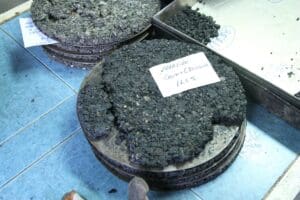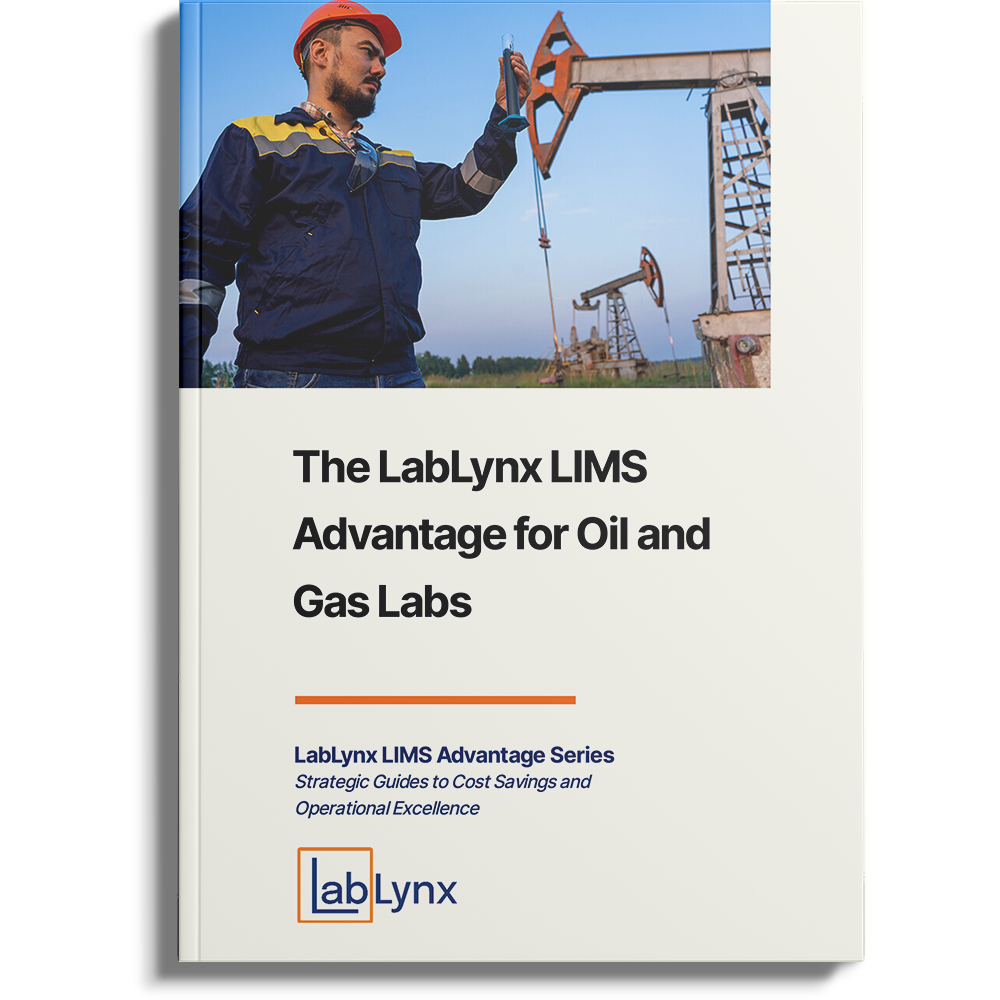
Construction materials and geotechnical testing: The basics
Like any other manufactured materials, construction materials such as fasteners, lumber, and adhesives have a certain level of expectation attached to them, that they will be safe to use, of good quality, and will perform in the way advertised by the manufacturer. And just as in other industries, laboratory testing of these construction materials is an important component of giving consumers more confidence in what they are acquiring and using. Can a bolt used in a bridge sufficiently resist corrosion and maintain sufficient shear strength to fulfill its purpose? Can a 2×8 piece of lumber meet specific strength and density requirements to ensure it can effectively act as header material? Does the pull-off strength claimed by a manufacturer for its construction adhesive actually meet that claim in multiple environments? These and other questions are asked about the physical, chemical, and mechanical properties of construction materials to ensure they are fit for purpose.
But when it comes to construction and engineering, it’s more than simply construction materials that need to be tested; the area where the structure itself is going to end up also has characteristics that must be examined. This geotechnical testing (or geotechnical investigation) examines soil and rock for load-bearing and seismic (i.e., engineering) properties to ensure any proposed structure can safely endure in that location for a minimum set of time.[1] Geotechnical engineers examine soil and rock mechanics, soil-structure interactions, geomechanics, ground improvement strategies, and various stabilities, as well as characterize geomaterials with laboratory and in situ sampling and analysis.[2] What are the compaction characteristics of the soil and splitting tensile strength of the rock where a bridge is to be constructed? Given the ground characteristics of an environment with both hot and cold temperature extremes, what concrete specification is required to ensure sufficient quality and strength of a section of highway over an extended period of time? What does a consolidation test say about the preparatory work that must be done on a site before a concrete pad for an office tower can be poured? These and other questions drive geotechnical testing and its various physical, chemical, and mechanical tests.
When we examine the construction materials and geotechnical testing laboratories accredited by the American Association of State Highway and Transportation Officials (AASHTO), ANSI National Accreditation Board (ANAB), American Association for Laboratory Accreditation (A2LA), and the International Accreditation Service (IAS), we find a vast array of standardized test methods to whi
ch labs are accredited to by extension of their ISO/IEC 17025 compliance. The next section examines these accredited laboratories for major clues as to what types of testing occur within those labs.

Types of testing
When examining the scope of accreditation of these types of labs to AASHTO, ANAB, A2LA, and IAS requirements, trends emerge on not only what raw materials are getting tested (e.g., soil, wood, iron) but also what other prepared construction materials are getting tested (e.g., asphalt, concrete, roofing shingles). The following represents only some of the materials being tested by these labs[3][4][5][6][7][8][9][10][11][12][13]:
- Soil
- Rock
- Aggregate (e.g., gravel, crushed stone, sand)
- Concrete (i.e., base material)
- Masonry (i.e., pre-formed bricks, stones, and blocks, of which some may be concrete)
- Pozzolan (siliceous and aluminous materials that become cementitious when water and calcium hydroxide is added[14])
- Sprayed fire-resistant material (“passive fire protection material directly applied to structural building members”[15])
- Bituminous mixtures (blends of viscous petroleum constituents with aggregates and performance-enhancing additives[16])
- Emulsified asphalt (an asphalt suspension for lower temperature applications[17]) and asphalt mixtures
- Iron and steel
- Wood and lumber
- Polymers/foams/adhesives
- Composites (two or more materials bound together that can act as a single material)
- Rubber products
- Fasteners
- Wire mesh
- Wire rope
- Welds
- Metal pipeline
- Plastic sewer piping
- Roofing materials
- Fenestration products
When we examine the types of standardized testing being performed on those materials, we discover a wide variety of physical, chemical, and mechanical tests. The following represents only some of the standardized tests performed by these labs[3][4][5][6][7][8][9][10][11][12][13]:
- tensile testing of rubber (ASTM D412)
- tensile testing of multi-wire steel strand (ASTM A1061/A1061M)
- flexural stress, strength, and strain of plastic-based materials (ASTM D790)
- bulk specific gravity of compacted hot mix asphalt (AASHTO T166)
- sampling of bituminous paving mixtures (ASTM D979)
- liquid limit, plastic limit, and plasticity index of soils (ASTM D4318)
- one-dimensional swell or collapse of soils (ASTM D4546)
- total evaporable moisture content of aggregate by drying (ASTM C566, AASHTO T255)
- planar shear of wood and lumber (ASTM D2718)
- ductility of carbon and low-alloy steels (AISI S903)
- peel or stripping strength of adhesives (ASTM D903)
- water penetration of a variety of materials (ASTM E331, ASTM E1105)
- pozzolanic activity of fly ash and natural pozzolans for use in concrete (ASTM C618)
- particle charge of emulsified asphalt (AASHTO T59)
- chemical analysis of hydraulic cement (ASTM C114, AASHTO T105)
- thickness and density of sprayed fire-resistant material (ASTM E605/E605M)
- air leakage through installed exterior windows and doors (ASTM E783)
- contact ultrasonic testing of weldments (ASTM E164)
- impact resistance testing of rigid roofing materials using ice balls (ANSI FM 4473)
- splitting tensile strength of intact rock core specimens (ASTM D3967)
- withdrawal and lateral resistance of fasteners installed in wood and wood-based materials (ASTM D1761)
References
- Patel, Anjan (2019), “Geotechnical investigation” (in en), Geotechnical Investigations and Improvement of Ground Conditions (Elsevier): 87–155, doi: 10.1016/b978-0-12-817048-9.00009-3. ISBN: 978-0-12-817048-9. Retrieved 21 November 2023. https://linkinghub.elsevier.com/retrieve/pii/B9780128170489000093
- “Geotechnical”. University of Delaware. 2022. Retrieved 21 November 2023. https://ce.udel.edu/research/research-overview/geotechnical/
- “IAS Certificate of Accreditation – Twining, Inc.” (PDF). International Accreditation Service. 30 March 2022. Retrieved 21 November 2023. https://www.iasonline.org/wp-content/uploads/2017/05/TL-196-CERT-New.pdf
- “IAS Certificate of Accreditation – HAAG Research & Testing, LLC” (PDF). International Accreditation Service. 11 September 2023. Retrieved 21 November 2023. https://www.iasonline.org/wp-content/uploads/2017/05/TL-656-Cert-new.pdf
- “IAS Certificate of Accreditation – Carlson Testing, Inc. – Bend OR Laboratory” (PDF). International Accreditation Service. 24 March 2022. Retrieved 21 November 2023. https://www.iasonline.org/wp-content/uploads/2020/02/TL-893-cert-New.pdf
- “IAS Certificate of Accreditation – Construction Consulting Laboratory West” (PDF). International Accreditation Service. 11 February 2020. Retrieved 21 November 2023. https://www.iasonline.org/wp-content/uploads/2017/05/TL-226-CERT-NEW.pdf
- “Anbessaw Consulting, Inc. dba The Quality Firm”. AASHTO re:source. American Association of State Highway and Transportation Officials. 21 November 2023. Retrieved 21 November 2023. http://aashtoresource.org/accreditation-details?LaboratoryID=W8SPNJPHXdQ*V
- “Florida Department of Transportation”. AASHTO re:source. American Association of State Highway and Transportation Officials. 21 November 2023. Retrieved 21 November 2023. http://aashtoresource.org/accreditation-details?LaboratoryID=3toFJWhKE2Q*V
- “ANAB Scope of Accreditation to ISO/IEC 17025:2017 – Center for Building Innovation, LLC” (PDF). ANSI National Accreditation Board. 30 January 2023. Retrieved 21 November 2023. https://search.anab.org/public/organization_files/Center-for-Building-Innovation-LLC-Cert-and-Scope-File-01-30-2023_1675103006.pdf
- “ANAB Scope of Accreditation to ISO/IEC 17025:2017 – Municipal Testing Laboratory, Inc” (PDF). ANSI National Accreditation Board. 7 July 2023. Retrieved 21 November 2023. https://search.anab.org/public/organization_files/Municipal-Testing-Laboratory-Inc-Cert-and-Scope-File-07-07-2023_1688760896.pdf
- “Boyle Laboratories, LLC”. American Association for Laboratory Accreditation. 1 December 2022. Retrieved 21 November 2023. https://customer.a2la.org/index.cfm?event=directory.detail&labPID=E80E511B-81E7-48DB-B353-54D995A2BEA4
- “Caltrans Structural Materials Testing Laboratory”. American Association for Laboratory Accreditation. 24 May 2023. Retrieved 21 November 2023. https://customer.a2la.org/index.cfm?event=directory.detail&labPID=C07B4C5E-F705-44D4-B348-C6C49A86800D
- “Laboratory Testing for Geotechnical Design and Construction Help”. EZ-pdh.com. Ezekiel Enterprises, LLC. Retrieved 21 November 2023. https://ez-pdh.com/laboratory-testing-for-geotechnical-design-and-construction-help/
- Juenger, Maria; Provis, John L.; Elsen, Jan; Matthes, Winnie; Hooton, R. Doug; Duchesne, Josée; Courard, Luc; He, Huan et al. (2012). “Supplementary Cementitious Materials for Concrete: Characterization Needs” (in en). MRS Proceedings 1488: imrc12–1488–7b-026. doi: 10.1557/opl.2012.1536. ISSN: 0272-9172. http://link.springer.com/10.1557/opl.2012.1536
- “Sprayed Fire-Resistant Materials (SFRM) and the Code …A Heat Discussion” (PDF). Froehling & Robertson. 25 January 2022. Retrieved 21 November 2023. https://www.fandr.com/wp-content/uploads/2022/01/SIC_LINKED-28-Sprayed-Fire-Resistant-Materials-SFRM-Special-Inspections-JAN-2022.pdf
- Widyatmoko, I. (2016), “Sustainability of bituminous materials” (in en), Sustainability of Construction Materials (Elsevier): 343–370, doi: 10.1016/b978-0-08-100370-1.00014-7. ISBN: 978-0-08-100995-6. Retrieved 21 November 2023. https://linkinghub.elsevier.com/retrieve/pii/B9780081003701000147
- “Emulsified Asphalt”. Pavement Interactive. Pavement Tools Consortium. Retrieved 21 November 2023. https://pavementinteractive.org/reference-desk/materials/asphalt/emulsified-asphalt/




